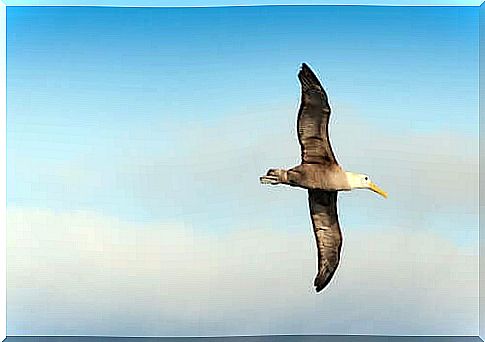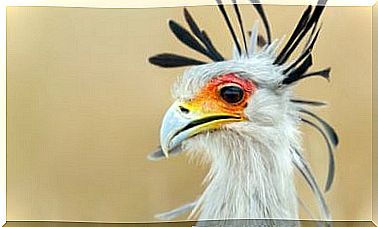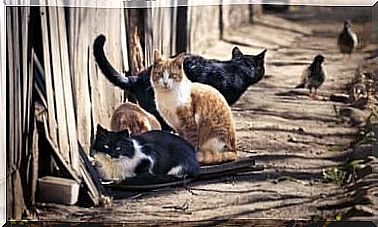Galapagos Albatross: Learn All About This Bird

Also known as roasted albatross, it is the only member of its family that lives in the tropics. In this article, we’ll tell you everything you need to know about the Galapagos albatross, a bird that is more than special.
Galapagos Albatross Characteristics
Its scientific name is Phoebastria irrorata and it belongs to the genus Diomedea . As a main characteristic, we can indicate that the Galápagos albatross is the only one of this family that lives in the tropics, more specifically in the Galápagos Islands – hence its name – during the breeding season and on the coast of Peru and Ecuador during the rest of the year.
It is a very long-lived bird, which can live to be 80 years old, but which unfortunately is in critical danger of extinction: it is protected in a national park, but it is vulnerable to illegal fishing, tourism and pollution with plastic waste.
As for its appearance, this albatross measures nearly three feet and can weigh about two kilograms. As an adult, it has white feathers on its neck, chest and legs, light gray on its belly and dark gray on its wings. Also, the beak is yellow. The chicks are almost completely gray, including the beak.
Habits and Diet of the Galapagos Albatross
The diet of this tropical bird is not very varied: fish, crustaceans and squid. That means everything he eats is in the sea. Due to the decline in food availability in recent times, specimens of Galapagos albatrosses have been seen eating debris regurgitated by other birds.
For hunting or fishing, the albatross follows linear routes along the coast of Peru and travels 1000 kilometers from the usual breeding sites. It has also been noted that it can circle around a school and attack at the least expected moment.

Another of the Galapagos albatross’ qualities is that, with its three meter wingspan, it can glide according to the winds or reach top speeds of 90 km/h!
Undoubtedly, the flight of the Galapagos albatross is its main feature and, therefore, it has been studied extensively. That’s why we know it can fly for hours without stopping and it can also fly vertically.
As the wind speed near the sea surface is less than 15 meters, they prefer to fly higher. They may have some difficulty landing due to their speed and the way they flap their wings.

reproduction
For the breeding procession, the Galapagos albatross stars in a wonderful spectacle : the male turns in circles around the female, arches his beak and emits specific sounds. It is worth noting that they are monogamous until one of the two members of the couple dies.
As for the chicks, it builds its nests in volcanic areas where lava eruptions are frequent. He looks for places with little vegetation but thick vegetation among the rocks. The female lays eggs between April and June, hatching them for two months.
When puppies are born, they remain with their parents and are completely dependent on them. The parents go hunting and the ‘babies’ are waiting in the nest. In their beak, they can accumulate up to two kilos of food to feed the little ones. Four months later, the chicks leave the nest and disperse from the colony in January, along with the other adult specimens.
All the animals are wonderful and catch our attention, but the Galapagos albatross delights us with its majestic flights and its great wingspan.









